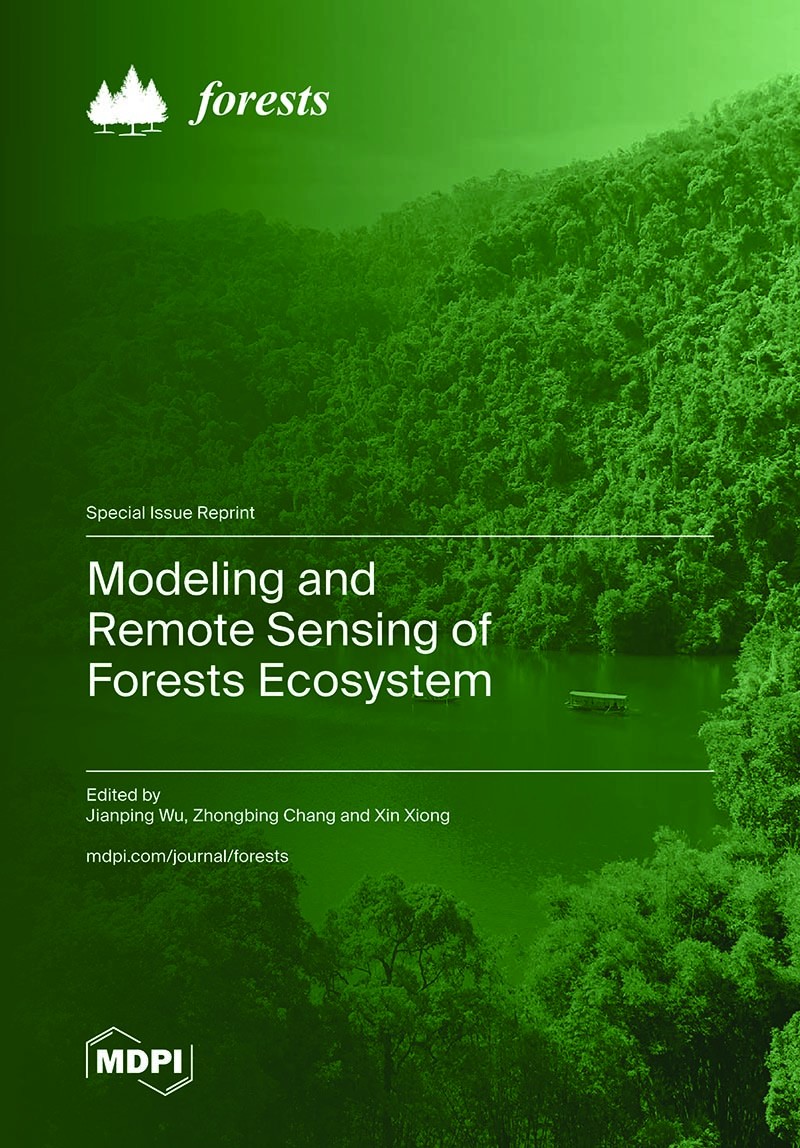Modeling and Remote Sensing of Forests Ecosystem
| Edited | Jianping Wu, Zhongbing Chang, Xin Xiong |
| Publication Date | March,2025 |
| publisher | MDPI |
| Preface | As the largest carbon pool in terrestrial ecosystems, forests play a pivotal role in regulating the Earth’s climate, influencing both the global carbon cycle and climate change mitigation strategies. Forests not only act as significant carbon sinks, absorbing and storing carbon dioxide from the atmosphere, but they also provide a wide range of other ecosystem services, including biodiversity conservation, water regulation, and soil protection. As such, understanding the dynamics of forest ecosystems is critical in addressing the global challenges posed by climate change. In recent decades, satellite and remote sensing technologies have emerged as powerful tools for monitoring forest changes across large spatial scales. These advancements offer unprecedented opportunities for the real-time tracking of forest health, structure, composition, and carbon fluxes, all of which are crucial for developing effective forest management strategies. By integrating various remote sensing sources, including optical imagery, synthetic aperture radar (SAR), light detection and ranging (LiDAR), and microwave sensors, researchers can now capture a more comprehensive and nuanced picture of forest ecosystems. These technologies enable the detection of forest cover changes, the assessment of forest biomass and carbon storage, and the monitoring of environmental stressors such as droughts, pests, and deforestation. In this reprint, titled ”Modeling and Remote Sensing of Forest Ecosystem,” we are pleased to present a collection of 12 insightful articles that represent the forefront of forest ecosystem research. These contributions highlight the valuable insights into how remote sensing technologies and computational models are being used to enhance our understanding of forest dynamics. These articles cover a broad spectrum of topics, including the development of new remote sensing techniques, the application of advanced modeling frameworks to simulate forest processes, and the integration of multi-source data to improve the accuracy and reliability of forest monitoring systems. The articles also address some of the most pressing challenges in forest ecosystem research, including the need for high-resolution, long-term data to track forest changes over time, the complexities of modeling forest carbon dynamics under varying environmental conditions, and the integration of remote sensing technologies into forest management practices. By bridging the gap between data collection, modeling, and on-the-ground forest management, these articles provide valuable insights into how remote sensing and modeling can inform decision-making processes and contribute to sustainable forest management practices. We hope that this collection will inspire continued innovation in remote sensing and modeling techniques and encourage further research into the role of forests in the context of global environmental change. By advancing our ability to monitor, analyze, and manage forest ecosystems, we can work towards more effective strategies for conserving and restoring forests, mitigating climate change, and ensuring the long-term sustainability of these vital ecosystems. |

下一篇已經是最后一篇




